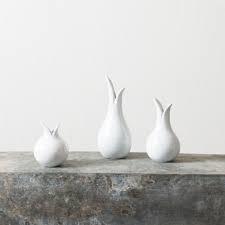SciPad Answers (Pages 281-283, 292-296)
Descrição

|
Criado por lauren calvert
mais de 7 anos atrás
|
|
Resumo de Recurso
Página 2
4. Use the diagram and previous answers to dicuss how changes in the diet, hunting/foraging behaviour and cliamte may have led to the obsebvable trends in cranial capacity. Changes in climate resulted in new challenges to obtian food from a wider range of sources, including meat. Those hominis better able to adapt to utilise diverse food sources, obtained more and higher quality calories and nutrients, which meant their brains were better 'fuelled' than less well adapted individuals. Brain capacity increased as hominis learned better huting and gathering strategies that enabled them to feed/nourish/grow a larger brain, and this in turn fed forward to further improce the language skills and technical skills involved in learnign how to make and use tools and to hunt collaboratively.
Page 282 (notes) Page 283 1.In 2015, a team of palaeoanthropologists assigned the fossil to the gus Homo. Describe evidence form the previous page that supports assigning these fossils to the genus Homo. The fossils suggest burialrituals involved so suggests a degree of intelligence, language and cooperative behaviour. Features of the skull: cranium lacks crests of the Austalopithecines. Its small 5-cuspid molars are typical of Homo , and suggest a high quality diet. Teeth are arranged in a parabolic arch. Pelvis and limbs: The lower half of the pelvis resembles the structure of modern humans and the valgus angle and lower limb reseble other Homo species. The tructure of the foot and ankle most indistinguishable from modern humansand the foot arch suggest a long and efficient stride (efficient bipedalism). Stature and size: Homo naledis stature (1.50m and 45kg) is similar to small-bodied humans. Hands: The thumb, wrist and hand bones a very similar to modern humans, although the finger bones are curved even more than the Australopithecines suggesting they retained good climbing abilities. 2. Some researchers remain cautious and are not yet satisfied that these fossils represent a new species of Homo, or even that they belong in the Homo genus. Describe features of these fossils that do not support the HOmo Designation. Their cranial capacity lies within the range of the australopithecines. The collarbone and arm bones suggest an aboreal, at least partly, lifestyle. Their wide rib-cage is very similar to the australopithecines. Top of the pelvis flares outwards in an ape-like manner and the top of the femus is identical to australopithecines and very different from Homo ses. Thier stature is at the upper range of the Australopithecines. The teeth, other than the molars, are primitive. The finger bones are more curved than any other austalophecines, suggesting at least a partly aboreal lifestyle. 3. State the key piece of information missing from the Homo naledi story. The bones have, so far, been difficult to date.
Página 3
Page 292 1. How do scientists knwo that hominins evolved in, and subsequently dispersed from, Africa. Both fossil and DNA evidence indicates and African origin for the Homo genus. 2. Outline why early Homo were successful in leaving Africa. Efficient bipedal gait allowed long distance travel, possibly following grazing herds that could be hunted using intellegence and teamwork, and effective tools to obtain meat. 3. Suggest why Homo sapiens reached South-East Asia and Austria before western Europe. Europe was still experiencing the end of a glaciation event. Homo sapiens probably followed a more temperate coastal route. 4. Describe the effect of glaciation on the global dispersal of early Homo spaiens. Glaciation would have deterred Homo sapiens from migrating into Northern/Western Europe, where conditions were harsh. With Africa effectively by the Sahara Desert, H. sapiens probably followed animal migrations (food source) along a more temperate coastal route, using land bridges that resulted from lower seas levels to reach Indonesia, Australia, etc.
Página 4
Page 293 1. State which model the followinf statements are referring to. (a) Modern Homo sapiens replaced the descendents of H. erectus from of an earlier migraition out of Africa. Out of Africa model. (b) Modern Homo sapiens volved in Africa first, and then spread to ther areas. Out of Africa model. (c) Modern Homo sapiens evolved simultaneously in different locations. Multiregional model. (d) Members of relative isolated populations breed with members of other populations. This ensured no speciation occured. Multiregional model.
Página 5
Page 294 1. Describe the properties of mtDNA that make it useful for tracing human ancestry. mtDNA is only inherited on the maternal line (via the egg/ovum) so it is not recombined via meiosis. Changes in mtDNA only occur by mutations which occur at a steady rate. 2. Describe the significance of 'Mitochondrial Eve'. The common ancestor of all current humans can be traced back, usingmtDNA, to a single woman in Africa between 100 kya and 200 kya. 3. (a) State which dispersal model is supported by mtDNA evidence. Out of Africa. (b) Justify your answer to (a). If all current humans share an ancestor in Africa <200 kya then we could not have evolved in Europe, Asia, et.c from an earlier Homo migration who emerged 1.8 mya and occupied those regions at the time "Mitochondrial Eve" was still in Africa.
Página 6
Page 295 1. Outlien why modern Africans do not carry traces of either Neanderthal or Denisovan DNA. Modern Africans did not migrate out of Africa to encounter and interbreed with Neanderthals or Denisovans
Quer criar suas próprias Notas gratuitas com a GoConqr? Saiba mais.
